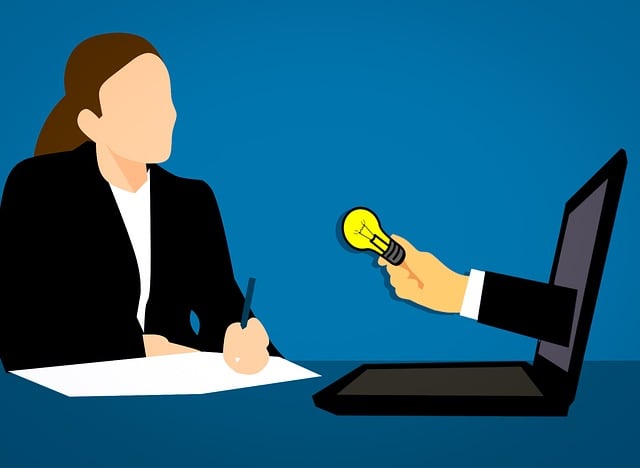Are your email campaigns falling flat? Are you struggling to convert leads into customers? It’s time to step up your B2B marketing game with email conversion optimization.
Imagine a world where every email you send is opened, read, and acted upon by your target audience. Picture your inbox overflowing with responses, inquiries, and sales. It’s not just a dream – it’s a reality waiting to be unlocked.
In this article, we will show you how to implement email conversion optimization techniques that will revolutionize your B2B marketing efforts. From crafting compelling subject lines that grab attention to personalizing your content for maximum impact, we will guide you through the proven strategies that drive results.
By segmenting your email list, optimizing your call-to-action, and continuously testing and analyzing your campaigns, you will not only increase conversions but also gain valuable insights into your audience’s preferences and behaviors.
Get ready to take your B2B marketing to the next level and achieve unprecedented success with email conversion optimization.
Key Takeaways
- Craft compelling subject lines using keywords and data-driven insights
- Personalize subject lines with recipient’s name or company for better open rates
- Segment email list based on factors like industry or job title for delivering relevant content
- Optimize call-to-action with clear language, eye-catching design, and social proof for improved engagement and conversions
Craft Compelling Subject Lines
Craft subject lines that grab your reader’s attention and make them eager to open your emails. Increasing open rates is essential for a successful email marketing campaign.
To achieve this, you need to craft compelling subject lines that entice your audience. Start by incorporating keywords that are relevant to your target audience and industry. Use data-driven insights to determine which subject lines have performed well in the past and incorporate those elements into your new subject lines.
Additionally, consider using personalization techniques, such as including the recipient’s name or referencing their company. Personalized subject lines can improve email deliverability and make your emails stand out in a crowded inbox.
By implementing these strategies, you can create subject lines that drive higher open rates and set the stage for engaging content.
Personalize Your Content
Tailor your message to each individual recipient, like a perfectly-fitted suit that effortlessly complements their unique needs and preferences. Personalization is key when it comes to email conversion optimization for B2B marketing. Gone are the days of generic, one-size-fits-all emails. Today, customers expect customized messaging that speaks directly to them.
By leveraging data and insights, you can create targeted communication that resonates with your audience on a deeper level. Start by segmenting your email list based on factors such as industry, job title, or previous interactions. This allows you to deliver content that is relevant and valuable to each specific group. By doing so, you increase the likelihood of engagement and conversion.
So, let’s dive into the next step: segment your email list by understanding your audience’s preferences and behaviors.
Segment Your Email List
Create a mosaic of your email list, piecing together the puzzle of your audience’s preferences and behaviors to cater your messaging with precision.
By segmenting your email list, you can engage in targeted outreach and deliver personalized content that resonates with each segment. Email list segmentation involves dividing your subscribers into groups based on specific criteria such as demographics, purchase history, or engagement level. This allows you to craft tailored messages that address the unique needs and interests of each segment.
Not only does segmentation increase the relevance of your emails, but it also improves open rates, click-through rates, and conversions. By understanding your audience and tailoring your messaging to their specific needs, you can optimize your call-to-action and drive even better results.
Transitioning to the next section, let’s explore how to further optimize your call-to-action.
Optimize Your Call-to-Action
To truly captivate your audience and entice them to take action, your call-to-action should be a tantalizing invitation that leaves them eagerly clicking for more.
By optimizing your call-to-action in your B2B marketing emails, you can improve engagement and increase conversions. Start by using clear and concise language that clearly communicates the value of your offer. Use action verbs and create a sense of urgency to motivate your audience to act.
Incorporate eye-catching design elements, such as buttons or bold colors, to make your call-to-action stand out. Additionally, consider leveraging social proof or testimonials to build trust and credibility.
Remember to test and analyze your email campaigns to see which call-to-action strategies yield the best results. This will help you refine your approach and continually improve your email conversion rates.
In the next section, we will discuss how to test and analyze your email campaigns to further optimize your B2B marketing efforts.
Test and Analyze Your Email Campaigns
Make the most of your email campaigns by testing and analyzing them, allowing you to uncover insights and optimize your efforts for maximum impact.
A/B testing is a powerful technique that enables you to compare different versions of your emails to determine which performs better. By testing different subject lines, email designs, and call-to-action buttons, you can identify the elements that resonate most with your audience and drive higher conversion rates.
Additionally, email analytics provide valuable data on open rates, click-through rates, and conversion rates, giving you a clear picture of how your campaigns are performing. By analyzing this data, you can identify areas for improvement and make data-driven decisions to enhance your email marketing strategy.
Continuously improving and adapting your email campaigns based on test results and analytics will ensure that you are always optimizing for success without wasting valuable resources.
Continuously Improve and Adapt
Keep evolving your email campaigns like a chameleon changing its colors, ensuring that you stay ahead of the competition and captivate your audience with fresh and engaging content. Continuous testing and adaptation are key to optimizing your email conversions for B2B marketing. By analyzing customer feedback and monitoring campaign metrics, you can identify areas for improvement and make data-driven decisions. Experiment with different subject lines, calls-to-action, and email layouts to find what resonates best with your audience. Use A/B testing to compare different versions of your emails and measure their performance. Incorporate customer feedback into your campaigns to address pain points and provide solutions. By continuously improving and adapting your email campaigns based on data and customer insights, you can increase engagement, conversions, and ultimately drive more business for your B2B marketing efforts.
| Column 1 | Column 2 | Column 3 | ||||
|---|---|---|---|---|---|---|
| Analyze email metrics | Conduct A/B testing | Incorporate customer feedback | ||||
| Monitor open rates and click-through rates | Compare different email versions | Address pain points and provide solutions | ||||
| Identify areas for improvement | Measure performance | Increase engagement and conversions | Implement personalized content and subject lines | Optimize email layout and design | Enhance email deliverability and inbox placement |
Frequently Asked Questions
How can I effectively measure the success of my email conversion optimization efforts?
To effectively measure the success of your email conversion optimization efforts, start by analyzing conversion rates. Track metrics such as click-through rates, open rates, and unsubscribe rates to gauge email performance.
Use A/B testing to compare different email variations and identify which strategies are generating the best results.
Additionally, monitor key performance indicators like lead generation and revenue generated from email campaigns.
By diligently measuring and analyzing these metrics, you can make data-driven decisions to optimize your email conversions and drive business growth.
What are some common mistakes to avoid when crafting subject lines for B2B email marketing?
When crafting subject lines for B2B email marketing, it’s crucial to avoid common mistakes that could hinder your success.
To create effective subject lines, focus on strategies that capture attention and drive engagement. Avoid using generic or vague language, as it can decrease open rates.
Instead, personalize subject lines with the recipient’s name or company. Additionally, incorporate numbers or statistics to make your subject lines more data-driven and compelling.
By following these strategies, you can maximize the impact of your B2B email marketing campaigns.
How can I ensure my personalized content resonates with my B2B target audience?
To ensure your personalized content resonates with your B2B target audience, you need to employ effective personalization strategies that drive audience engagement.
Tailor your messaging to address their pain points and challenges, showcasing how your product or service can solve their problems.
Use data-driven insights to segment your audience and deliver relevant content that speaks directly to their needs.
This approach will make your content stand out, capturing their attention like a bright beacon in a sea of generic emails.
Are there any best practices for segmenting a B2B email list based on industry or job role?
Segmenting a B2B email list based on industry or job role can greatly enhance your email marketing efforts. By segmenting your list, you can overcome segmentation challenges and deliver industry-specific content that resonates with your audience. This personalized approach drives higher engagement and conversion rates.
According to research, segmented email campaigns achieve a 14.64% higher open rate and a 59.99% higher click-through rate compared to non-segmented campaigns. So, take advantage of industry-specific segmentation to optimize your B2B email conversions.
What are some key elements to consider when optimizing call-to-action buttons in B2B email campaigns?
To optimize call-to-action buttons in your B2B email campaigns, focus on button design and A/B testing.
Design buttons that are visually appealing, easy to read, and stand out from other elements.
A/B testing allows you to experiment with different button colors, sizes, and text to determine which version drives more conversions.
By continuously testing and optimizing your buttons, you can improve click-through rates and ultimately boost your email campaign’s effectiveness.
Conclusion
Congratulations! You’ve just learned some powerful strategies to boost your B2B email conversion rates. By crafting compelling subject lines and personalizing your content, you’ll capture your audience’s attention.
Segmenting your email list and optimizing your call-to-action will further increase engagement. Remember to test and analyze your campaigns to identify what works best for your audience.
Lastly, continuously improve and adapt your email marketing tactics based on data-driven insights. Now, it’s time to put these techniques into action and watch your conversion rates soar!







